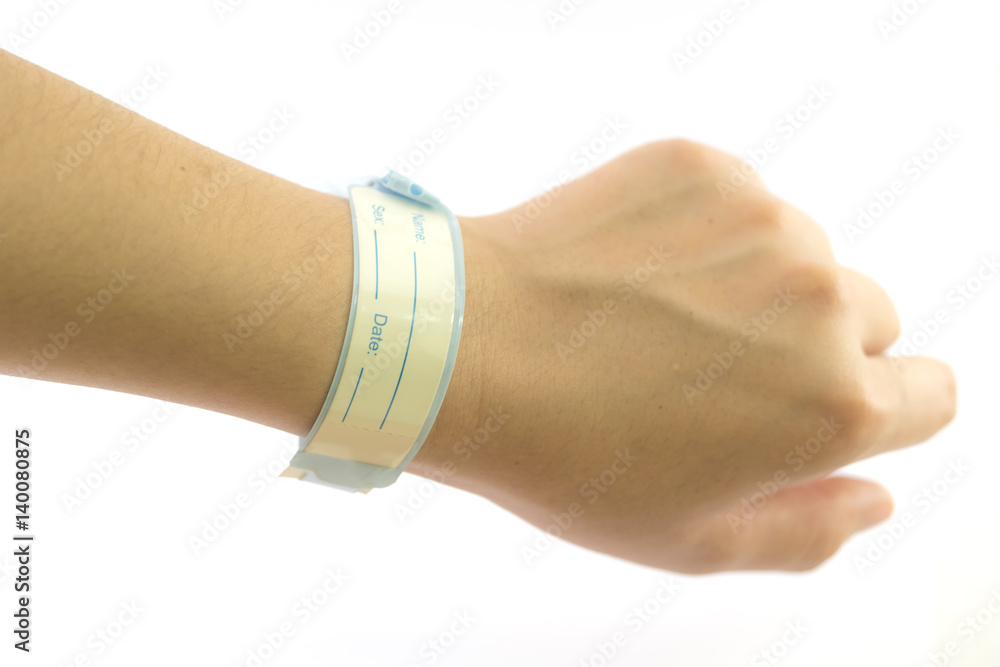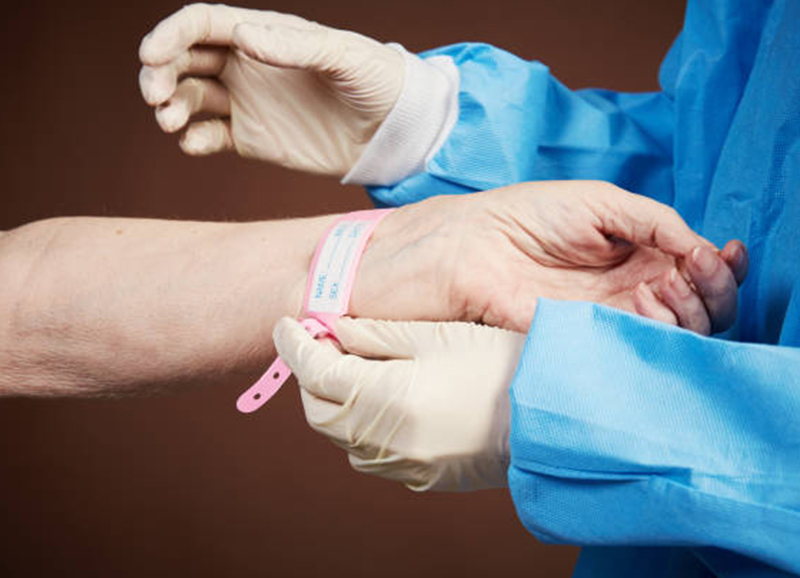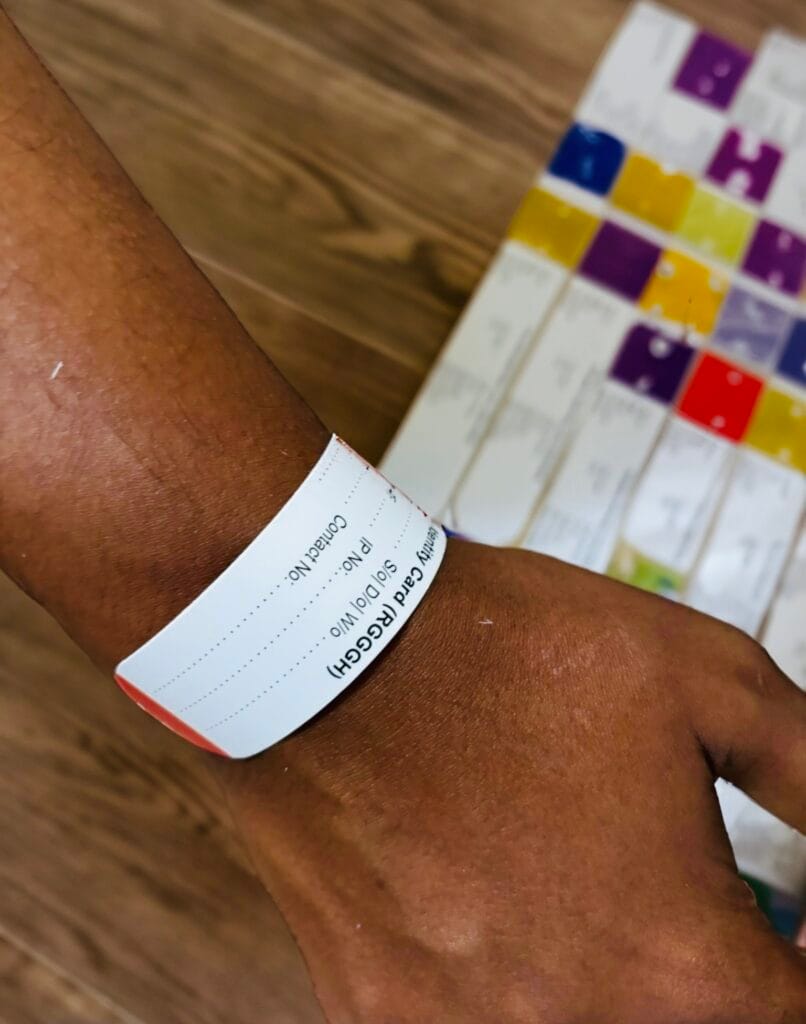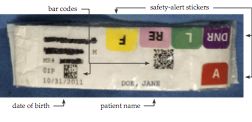Enhancing Safety And Security: The Value of Person Recognition Bands in Health Care
In the realm of healthcare, the efficiency of person identification bands can not be overstated, as they serve as a fundamental guard versus misidentification and succeeding mistakes. As we discover the complex duty of these bands, it ends up being obvious that their significance extends beyond simple identification, raising inquiries concerning finest practices and future innovations in person safety and security.
Summary of Patient Recognition Bands
Individual identification bands play an essential role in making certain the safety and security and accuracy of person care in healthcare setups. These bands, usually endured the wrist or ankle joint, function as a crucial device for confirming patient identification, thus decreasing the danger of mistakes in therapy, medicine administration, and various other healthcare treatments. Made from durable products, person identification bands usually include essential info such as the patient's name, date of birth, clinical document number, and barcodes or QR codes for scanning.
The implementation of individual identification bands is essential in various medical care environments, including hospitals, outpatient facilities, and long-lasting treatment organizations. They add to a methodical strategy in patient administration, enabling medical care experts to promptly and accurately determine people, especially in high-pressure scenarios where swift decision-making is essential.
Additionally, making use of these bands is straightened with governing criteria intended at boosting patient safety - Patient Identification Band. By ensuring that each client's information is easily accessible and easily proven, healthcare companies can keep a high requirement of care, decrease the incidence of adverse occasions, and cultivate a society of security within healthcare institutions
Benefits of Accurate Recognition
Accurate identification is fundamental to enhancing individual security and care quality in healthcare setups. It serves as the first line of defense versus mistakes that might result in adverse person end results. By making certain that each individual is correctly determined with dependable means, such as person identification bands, doctor can considerably decrease the danger of misidentification, which can cause unsuitable therapies, drug mistakes, and even medical mix-ups.
Furthermore, exact client identification facilitates efficient interaction among medical care teams. When all team members can constantly identify individuals, they can share crucial information extra successfully, leading to much better control of treatment. This is especially vital in emergency situation circumstances where prompt treatments are important.
In addition, accurate recognition sustains compliance with governing requirements, therefore reducing the danger of lawful effects for healthcare facilities. It cultivates trust fund between patients and medical care providers, as people feel much more safe recognizing that their identities are being protected.

Typical Challenges Encountered
Ensuring efficient patient identification in medical care settings presents an array of obstacles that can jeopardize safety and security and care quality. Individuals might show up in a state of complication or distress, making exact recognition difficult.
Another difficulty is the dependence on human consider identification procedures. Healthcare experts might inadvertently neglect or misunderstand recognition methods, specifically in high-stress atmospheres such as emergency situation divisions. This can lead to errors, including the administration of incorrect treatments or medicines.
Technical issues also present obstacles. Digital health record (EHR) systems are designed to streamline patient identification, system outages or individual errors can interrupt the process. The physical style of individual ID bands can lead to readability problems, particularly in cases where bands are damaged or covered.
Finally, irregular training among staff regarding recognition methods can lead to voids in understanding and technique. Resolving these difficulties is important for enhancing patient safety and security and making sure that identification bands offer their designated purpose effectively.
Ideal Practices for Application
To effectively carry out client recognition bands in health care settings, companies should embrace a multifaceted technique that prioritizes standardization, innovation, and training assimilation. Standardization entails developing clear methods for the style, application, and use identification bands throughout all departments. This guarantees consistency and lessens the danger of errors linked to variances in band types or labeling approaches.


Training is essential for all medical care personnel to ensure they understand the importance of exact client recognition, how to properly apply and check out identification bands, and the procedures to follow in situation of discrepancies. Routine workshops and correspondence course can reinforce this understanding and advertise a culture of safety and security.
Modern technology integration plays a pivotal duty in enhancing the efficiency of patient recognition bands. Using barcode scanning or RFID modern technology can improve the recognition procedure, permitting for real-time verification of person identities. Furthermore, digital health record check it out systems must be set up to include informs for inequalities between the identification band and person information.
Future Trends in Client Security
As medical care proceeds to progress, the focus on client safety is likely to escalate, driven by improvements in technology and a higher understanding of systemic threats. Arising fads indicate a change towards even more integrated systems that leverage data analytics, synthetic knowledge, and artificial intelligence to enhance patient recognition procedures. These technologies can assist recognize potential security concerns prior to they intensify, consequently reducing mistakes related to misidentification.
In addition, the execution of blockchain modern technology may reinvent how patient image source data is firmly shared amongst doctor, guaranteeing that recognition bands are constantly precise and updated. This will not only improve individual safety yet additionally assist in seamless communication across multidisciplinary teams.

On top of that, the expanding concentrate on personalized medicine is expected to influence person security procedures. By incorporating group and genetic info into recognition systems, health care professionals can customize therapies much more efficiently, minimizing the risks of adverse reactions due to misidentification.
Conclusion
In final thought, person identification bands serve as an essential element in enhancing safety and security within medical care environments. Eventually, the ongoing focus on robust identification protocols will contribute to enhanced individual results and overall security in healthcare setups.
In the realm of health care, the effectiveness of patient identification bands can not be overemphasized, as they offer as a fundamental guard versus misidentification and subsequent mistakes.Patient identification additional hints bands play a vital role in making sure the safety and precision of patient care in medical care settings. Made from sturdy materials, individual recognition bands usually include crucial information such as the person's name, day of birth, clinical record number, and barcodes or QR codes for scanning.
By making certain that each client is correctly recognized with dependable means, such as patient identification bands, medical care companies can significantly minimize the danger of misidentification, which can lead to unacceptable therapies, medication errors, and even medical mix-ups.
In conclusion, individual identification bands offer as an important component in boosting safety and security within medical care environments. Patient Identification Band.